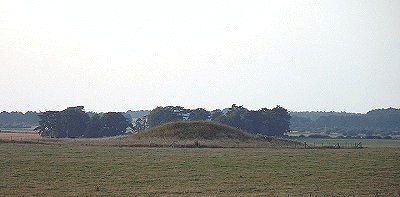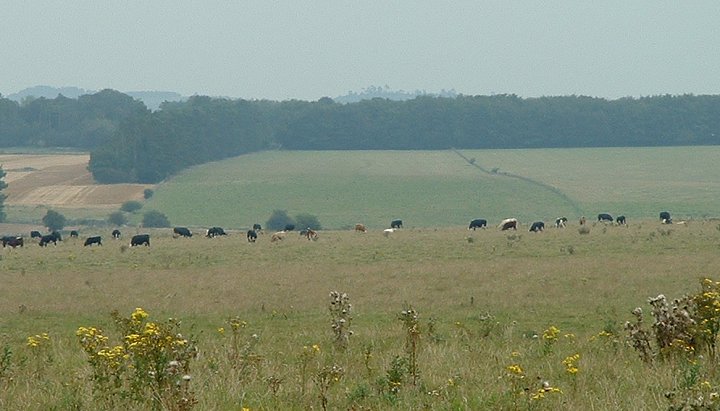 This is a nice set of six round barrows about 150 metres south of The Cursus and 600 metres north-north west of Stonehenge and is clearly visible from the stones. Aligned roughly east-west this small linear cemetery has survived the ravages of farming and antiquarians reasonably well and being of Bronze Age date they are roughly contemporary with the final Phase III of building at Stonehenge. This is a nice set of six round barrows about 150 metres south of The Cursus and 600 metres north-north west of Stonehenge and is clearly visible from the stones. Aligned roughly east-west this small linear cemetery has survived the ravages of farming and antiquarians reasonably well and being of Bronze Age date they are roughly contemporary with the final Phase III of building at Stonehenge.
The Cursus
Neolithic Processional Track ?
North of Stonehenge, Wiltshire OS Map Ref SU120430
OS Maps - Landranger 184 (Salisbury & The Plain), Explorer 130 (Salisbury & Stonehenge)
 Picture taken from the western terminal of the Cursus looking east. The almost parallel course can be seen as the line of bushes and trees on the left and the line of hedges 100 metres away to the centre-right of the pictur Picture taken from the western terminal of the Cursus looking east. The almost parallel course can be seen as the line of bushes and trees on the left and the line of hedges 100 metres away to the centre-right of the pictur
Like the Stonehenge Avenue this monument was first recorded by the 18th century antiquarian William Stukeley. He fancied teams of Romans or Ancient Britons racing chariots along its length and so gave it the Latin name for 'racecourse' - cursus, a term which is now applied to all monuments of this type. It is now known that it is much older than Stukeley believed and is though to date from the late Neolithic - it may even predate the first phase of construction at Stonehenge which lies about 700 metres to the south.
What can be seen on the ground today is very faint but its course and size can be clearly seen from the air. It consists of a pair of nearly parallel banks and ditches varying between 100 and 150 metres apart and traveling for a distance of around 3 km across the Stonehenge landscape. The eastern end was marked with a long barrow and it could be that the cursus was built as a processional trackway leading to this barrow. What is certain is that the cursus is aligned on the equinoctial sunrise and also Woodhenge.
There was once a second narrower and shorter cursus some way to the west, known as the Lesser Cursus but this has now been completely destroyed by ploughing.
Visit Wiltshire Links
Woodhenge
Burial Mounds
The Avenue
Normanton Down
Avebury Stone Circle
Silbury Hill
Chalk Hill Figures
West Kennet Long Barrow
Crop Circles
Old Sarum Hillfort
Salisbury City and Cathedral |